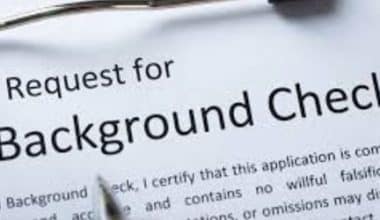Inactive accounts are most generally referred to as “dormant.” This type of account does not show any recent activity, such as deposits or withdrawals. If you want to keep your money safe, you better wake up and understand what “dormant” means in the banking world. Otherwise, your funds might just hit snooze and never wake up again! You don’t want your account to turn into a sleeping beauty, especially if it’s got a hefty balance. Alright folks, get ready for a thrilling ride as we explore the mysterious world of dormant accounts. We’ll uncover the secrets behind why they happen and how to avoid them. Buckle up! With the right amount of brainpower, you’ll be able to climb over and avoid a dormant account. Get ready to discover the ultimate solution for avoiding a boring account! It’s buried deep, but don’t worry! I shall unearth it for you.
Dormant Account
A dormant account is one that has been inactive for an extended length of time. Bank accounts, credit cards, investment accounts, and other forms of accounts are all susceptible to this. When an account goes dormant, the financial institution may levy fees, terminate the account, or even sell it to another company. To revive a dormant account, call the financial institution and provide certain information, such as your name, address, and Social Security number. You may also be required to show identification, such as a driver’s license or passport. The financial institution will revive your account once you have given the necessary information. A dormant account is like a sleeping beauty, waiting for its prince charming to come and wake it up with a kiss. But let’s be real, it’s probably going to stay asleep forever. Well, it’s not just your ex who can drain your accounts.
Your bank accounts, credit cards, investment accounts, and other types of accounts can also pull a disappearing act on you. When an account becomes dormant, the financial institution may start treating it like a neglected plant – charge it fees, threaten to close it down, or even give it away to a more attentive owner. Getting in touch with a financial institution over the phone or online, logging into the account, or making a withdrawal or deposit are all examples of activities. State law defines a dormant account as one in which there has been no activity for a predetermined amount of time.
State rules require financial institutions to seek to mail the owners of dormant accounts using the most recent contact information. Dormant accounts often do not have a statute of limitations, thus the owner or beneficiary may access the cash whenever they want.
How Long Does A Dormant Bank Account Have To Be?
When three years have passed with no action on an account, that account is considered dormant in New York. A minimum annual deposit or withdrawal is required to keep them functioning. In contrast, the laws of Mississippi are very different. For instance, after five years of inactivity, a checking account is considered dormant, whereas a traveler’s checks and money orders both become inactive after fifteen years. Although the time frames are different, the procedures are the same. Once a bank determines that an account is inactive, it must notify the relevant authorities. If there is money in a dormant account, the state will eventually come for it.
Financial institutions are required to make contact attempts with account owners prior to collecting and closing accounts.
Dormant Account in Bank
To protect the funds from fraudulent activity, the bank makes the dormant savings account inactive. Obtaining an account holder’s sample signature is simple for bank workers. Untrustworthy workers may utilize it to make cash withdrawals using withdrawal slips. Banks stop these frauds by classifying the bank accounts as dormant and monitoring them. According to RBI regulations, a savings account would be considered inactive or dormant if there have been no transactions for more than two years. Banks turn inactive accounts into dormant accounts in order to decrease fraud. When an account has been designated as dormant, you are not permitted to log onto it, make payments, transfer money, or withdraw money.
For a dormant account, various financial institutions have different regulations. Some institutions cancel dormant accounts with no balance after a specific amount of time. If you are connected to IDFC FIRST Bank, however, you will be notified prior to the closure of your account. If your account is inactive, you cannot do the following services or transactions:
- Moving to a new home
- Renewing a debit or ATM card
- Changing the name of a joint account holder.
- Alteration of signature
- Transactions made at a bank branch or through Internet banking
RBI regulations prohibit banks from charging extra money to reactivate a bank account that has been inactive. You must fill out an application form and send it to the bank along with a letter explaining why the account has been dormant in order to get it reactivated. Moreover, you must physically be present at the branch and have current identification and proof of residency with you. You should perform at least one financial transaction in your account after finishing the aforementioned procedure and receiving the bank representative’s confirmation.
Dormant Account Activity
A financial account that has not shown any activity for a considerable amount of time is considered dormant. Typically, this refers to checking and savings accounts that have gone at least a few months without having money taken out of them. Keeping money in inactive accounts without ever withdrawing it typically carries penalties. The bank or other organization that holds the deposits takes steps to create a dormant account, which happens on its own. After a predetermined amount of time, the government transfers the assets in these accounts to the Treasury.
In activities in the case of unusual or questionable behavior, an account may become inactive. Actions like hacking into mobile banking systems, making excessively frequent transfers of funds, or committing fraud are all possibilities. If such a situation arises, the blocking will happen immediately. In contrast to using an ATM to withdraw significant sums of money, this process requires confirmation from the customer’s bank. When the bank is unable to reach you via the provided contact information, they will place your account in a dormant status. For safety reasons and to prevent consumers’ funds from disappearing without a trace, banks take such measures.
Looks like your account has been taking some serious sleep due to lack of attention. It’s now officially dormant, but don’t worry, a little deposit or withdrawal activity will wake it right up! Ah, the bank’s monthly “surprise fee” – it’s like a little gift from them to us! If you don’t feed your account, it’ll start losing weight faster than a Hollywood celebrity on a juice cleanse thanks to those pesky admin fees. When the balance hits rock bottom, the account goes into hibernation mode. Well, well, well, looks like your account is going into hibernation mode!
How to Withdraw Money From a Dormant Account
Well, apparently even dormant accounts need some love and cash injections every now and then! But don’t worry, it’s just as easy as solving a Rubik’s Cube blindfolded while riding a unicycle on a tightrope over a pool of hungry sharks. Well, if you want to wake up your dormant account, you better give those financial institution folks a ring-a-ding-ding. They’ll tell you what to do with all that cash you’ve been hoarding under your mattress. The distinction between a closed account and a dormant account appears to be unclear. A dormant account is one that is still active but hasn’t seen any activity in a while. This account should become active if you deposit even a cent into it.
You can absolutely receive money in a dormant account. However, there are sometimes screening mechanisms that allow your branch to accept or reject transactions when you receive money through RTGS/NEFT in your account. If you have your contact information in your account, they might try to contact you. The best course of action is to activate your account and submit your KYC in the branch. A bank account that is dormant can receive money. Basically, in order to withdraw funds from the account, the customer must submit updated KYC documents together with a request to modify the account’s status from inactive to active. If the branch is pleased, it will make the necessary changes. Sometimes, if a transfer is made using RTGS or NEFT, the branch has the option to accept or reject the funds being held in suspense until KYC has been updated.
How to Reactivate Dormant Account
Before reactivating your account, keep the following things in mind. Whether the bank will regularize the customer’s dormant bank account depends on the risk category of the account holder. The account holder will need to submit KYC documentation in order to reactivate a dormant account. For verification, the account holder will also need to sign. The activation of a dormant bank account is free. To revive a dormant bank account, please proceed as follows:
1. The account customer must access their funds via cheque or automated teller machine.
2. If the customer has more than one account with the bank, they can request a transfer of funds by sending a secure message from their Internet banking ID.
3. The account holder must submit an application form detailing the circumstances for the account’s inactivity.
4. The fourth step is for the bank to confirm the customer’s identity before resuming service to the account.
5. Finally, the account holder must visit the bank in person, bringing with them proper identification and proof of address. Find out more about Know Your Customer requirements at your local bank. Keep in mind that, according to RBI regulations, banks cannot impose fees for reviving inactive accounts.
What Happens When an Account Is Dormant?
A dormant account is one that hasn’t seen any activity, financial or otherwise, for a significant amount of time. Dormant accounts are considered abandoned when a certain amount of time (which varies by state) has passed.
How Long Can a Bank Account Stay Dormant?
The account can be considered unclaimed once a certain period of time has passed. What happens to the funds in an inactive bank account depends on the state in which the account is located. Three to five years is the norm, but the laws vary from place to place.
Can I Get My Money if My Account Is Dormant?
You cannot move money from your bank to a dormant account, sorry. If you need to transfer money to a dormant bank account, you should first speak with your bank to learn the transfer steps.
How Do I Withdraw Money From My Dormant Bank Account?
By getting in touch with their bank, a person can recover money from a dormant account. They will be required to supply the account number in addition to providing identification proof. Identification.
How Do Banks Handle Dormant Accounts?
The account becomes inactive when the balance is zero owing to no withdrawals or deposits. The bank chooses the monthly account management cost. If no money is deposited into the account, admin fees will be deducted, causing the balance to drop until it reaches zero.
Do Banks Close Dormant Accounts?
Yes. In general, banks have the right to cancel accounts for any reason without warning. Inactivity or poor utilization are a couple of potential causes. For information on rules particular to your bank and account, review the deposit account agreement.
Does a Dormant Account Get Closed?
Banks define an account as inactive if there hasn’t been a transaction from the customer’s side for more than a year. In the first 14 days after an account’s inception, banks don’t charge an account closure fee.
Conclusion
If you have a dormant account, it is important to reactivate it as soon as possible. This will help you avoid fees, keep your account open, and protect your personal information. Discover how to keep your account active with these helpful tips. Make the most of your account by using it regularly. Ensure that your contact details are always current with your financial institution. Stay on top of your finances by regularly reviewing your account statements. For any inquiries or apprehensions regarding your account, please do not hesitate to reach out to your financial institution.
Related Posts
- How Much Can You Take Out of An ATM? ATM Withdrawal Limits
- BEST BANK FOR SMALL BUSINESS IN 2023
- ACCOUNT MANAGEMENT: Definition, Skills, System, Salary & Duty






